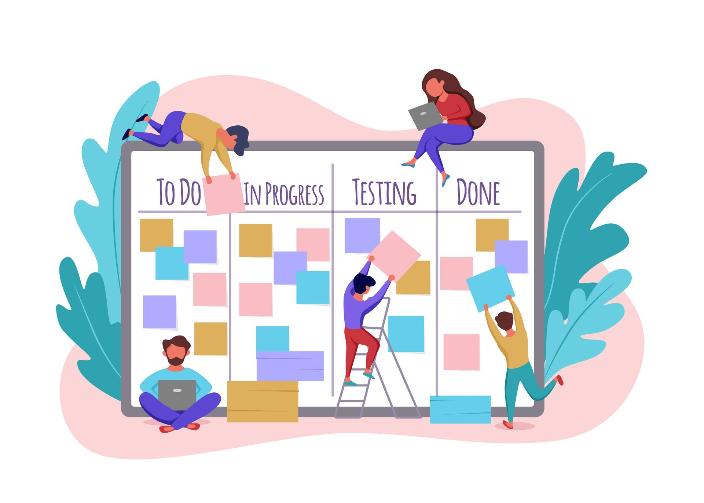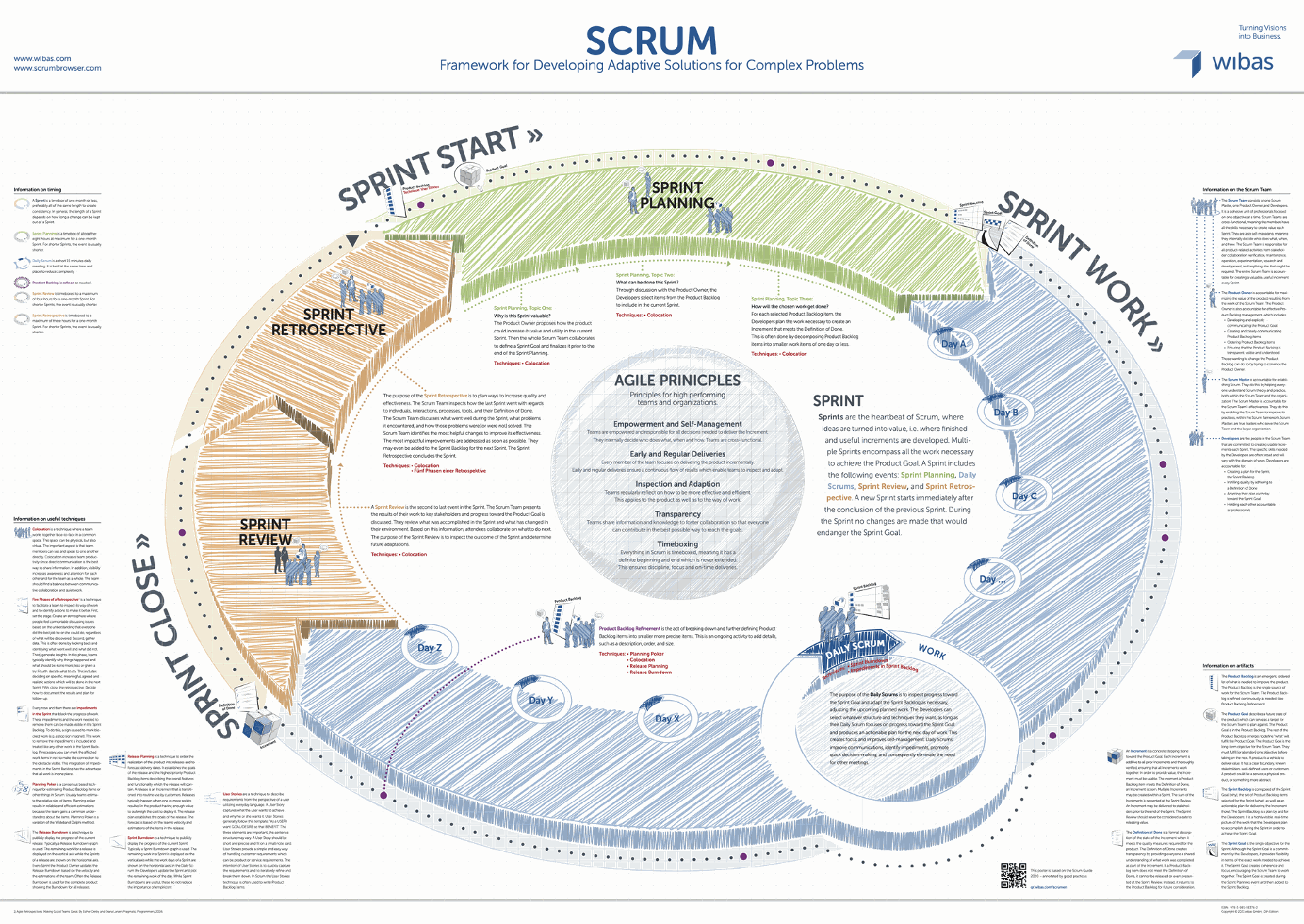Q&A
What is agile project management?
In the increasingly dynamic and complex environment of the modern business world, "Agile Project Management" has established itself as the leading paradigm for project execution and control. But what exactly is agile project management? This approach is more than just a trend. It represents a fundamental shift in the way we design, manage and successfully implement projects.
Agile project management methods
There are various methods of agile project management, all based on the principles of the Agile Manifesto. They emphasize individuals and interactions, working products, customer collaboration, and responding to change. The best-known agile methods or frameworks include the following Scrum, Kanban and Lean.

Agile project management definition
Agile project management is an iterative approach to planning and executing projects. Instead of creating a fully developed project plan from start to finish, the work is divided into small, manageable parts. In this approach, the deliverable to be developed is divided into increments that are worked on separately, and the schedule is divided into iterations, typically sprints. This subdivision allows teams flexibility to react to changes and new requirements during the project duration and to constantly introduce improvements. And this without having to throw away a lot of planning and work. The end result is a product or service that actually meets the current needs and requirements of the stakeholders.
Agile project management: Scrum
 Scrum is one of the most popular agile project management methods. It is particularly useful in product or service development, where requirements and solutions are developed through the collaborative work of cross-functional teams. Scrum is structured and relies on regular sprints (work cycles) followed by review and planning meetings.
Scrum is one of the most popular agile project management methods. It is particularly useful in product or service development, where requirements and solutions are developed through the collaborative work of cross-functional teams. Scrum is structured and relies on regular sprints (work cycles) followed by review and planning meetings.
The central roles or responsibilities in Scrum are the Product Owner who sets the product vision and prioritizes the work to be done. The development team or the developers do the work and the Scrum Master coaches the process and stakeholders and takes care of identifying and removing impediments.
Advantages of agile project management
Agile project management enables teams to respond more quickly and effectively to change and new requirements. It fosters a culture of continuous improvement, where teams regularly review what is working well and what could be improved. It also focuses on customer collaboration, so that the final product or service is developed closely with input and feedback from customers or users. This ensures that what is developed meets the needs of the customer and delivers value to them.
Conclusion: Agile methods in project management
Agile project management provides an efficient and flexible method for managing projects that operate in a constantly changing environment. By using agile methods, teams can respond quickly to change, make continuous improvements, and ultimately deliver products or services that meet and possibly exceed stakeholder expectations.
Although implementing agile methods requires a significant change from traditional project management principles, the benefits in terms of efficiency, product quality and customer satisfaction can be substantial.
Contact us or make an appointment directly with one of us. We are Timo Foegen, Yvonne Fischer, Tina Eisoldt, Daniel Votta and Lutz Koch.
We look forward to talking to you.
Certified Scrum Master (CSM)
You are curious about Scrum, how Scrum works and how it helps to be more productive? You want to experience Scrum and its added value? You are looking for a training to become a Certified Scrum Master (CSM) that is a workshop and does not require slides? Then you are right here at wibas.
Agile organization
Becoming an Agile organization is a goal for many companies. Linked to this is the desire to become more responsive and enable faster alignment to changing markets.
Agile Transformation
What is an Agile Transformation? Prerequisites ✓ Procedure ✓ Success factors ✓ Transformation coaches ✓ Roadmap ► Learn more now!
Certified Scrum Product Owner (CSPO)
The Certified Scrum Product Owner training with certificate from the Scrum Alliance. Learn in an interactive workshop, which is fun and brings them further in the role as a product owner.
What is agile working?
Agile working comes from implementing and establishing agile values and principles in the culture of the organization.
Agile Coaching
With years of experience, our coaches help organizations take advantage of agile methods and use them to achieve their business goals.
